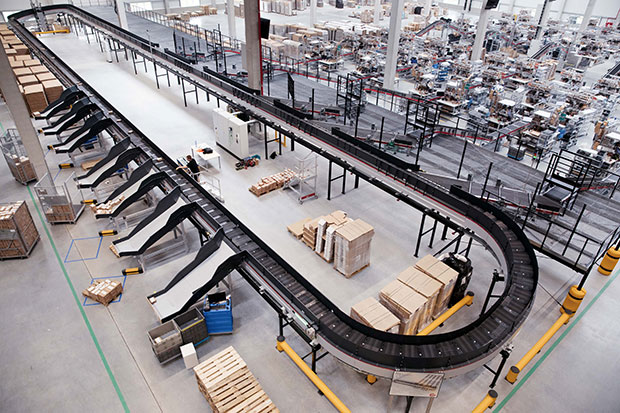Intralogistics is a sector that is ever-evolving. As consumer habits change, so do the requirements for warehouses and distribution centres. Success hinges on a brand’s ability to quickly respond to market trends and sector regulations. Many customers now expect next-day delivery, online retail, and a flawless omnichannel experience. To satisfy these expectations, many brands are opting for newer warehouse equipment.
 Technology has been the most defining factor in solving fulfilment challenges. Automated storage and retrieval systems were introduced in the 1960s to streamline inventory management. Subsequent decades saw the rise of warehouse management systems to help streamline intralogistics processes.
Technology has been the most defining factor in solving fulfilment challenges. Automated storage and retrieval systems were introduced in the 1960s to streamline inventory management. Subsequent decades saw the rise of warehouse management systems to help streamline intralogistics processes.
Sortation systems, which emerged in warehouses during the 1970s, are anticipated to experience a surge in popularity in 2024. These systems, also known as ‘sorters,’ use built-in sensors to identify products within a tote, carton, polybag, or parcel. These containers are then redirected to different warehouse areas based on their order destination or the courier service they’ve been assigned to.
Widely used in various sectors like retail, e-commerce, fashion, and logistics, sorters are increasingly finding their way into specialised industries such as automotive and grocery. The versatility of sorters lies in their ability to handle a diverse range of product types, sizes, and weights.
In warehouse operations, sortation systems play a pivotal role. Usually, they are installed in order picking or dispatch areas to improve the efficiency of operations. However, new uses for sorters are still being explored. GEBHARDT Intralogistics Group has found that cross-belt sorters are particularly beneficial when installed next to automated storage areas.
The increase of sorters in warehouses can be attributed to a notable trend over the past decade: while parcel volumes have grown, parcel sizes have diminished. This is attributed to the boom in e-commerce shopping and the shift towards smaller items such as clothing, accessories, and electronics. Nowadays, customers tend to favour more frequent, smaller deliveries over fewer, larger ones.
Sortation systems make it possible for brands to process large volumes of orders without affecting accuracy or traceability. In an era where next-day delivery is in great demand, sorters give brands the operational support they need to meet tight delivery timeframes.
‘The GEBHARDT SpeedSorter® line is ideal for outbound distribution’ explains Adam Fox, Account Manager for GEBHARDT Intralogistics UK. ‘We get a lot of interest from distribution centres and e-commerce brands that need to sort large orders quickly and efficiently. Many businesses still use a lot of manual labour, and as the orders flood in, they quickly realise it’s not practical in the long run. Automation is quicker and safer, and it can help minimise operational costs. The GEBHARDT SpeedSorter® is designed with accessibility and maintenance in mind. It has features such as automatic tensioning and lubrication that ensure maximum utilisation.’
The data gathered by the solutions’ sensors can help with process monitoring by relaying information back to a central system. Automating sorting processes also minimises the risk of human error and ensures accurate orders.
Flexibility is also high on the agenda of manufacturers and distributors. Many modern sorters are built with modular designs, so they can be quickly, easily, and cheaply modified to meet new requirements. Christian Schäfer, sortation expert for GEBHARDT Intralogistics Group, comments, ‘Our goal is to create systems that support customers in both the short and long term. Businesses are looking for systems that allow them to react quickly to changes and new trends. That is why it is so important for us to offer flexible sorting systems.’




Comments are closed.